Humans are complex creatures.
We’re exposed to thousands of micro events every single day.
Some things we react to. Some we don’t.
What triggers our reactions?
- An activating event (something we encounter)
- Beliefs (how we interpret that event)
- Consequences (what we feel as a result of our beliefs)
Behavioral targeting is based on the premise where timely, relevant ads are shown to a person in order to create a reaction.
In a marketing context, we’re talking about conversions.
More than 40% of consumers want to see online ads related to their interests instead of random ads.
Because of this, marketers are using behavioral targeting in a number of ways:
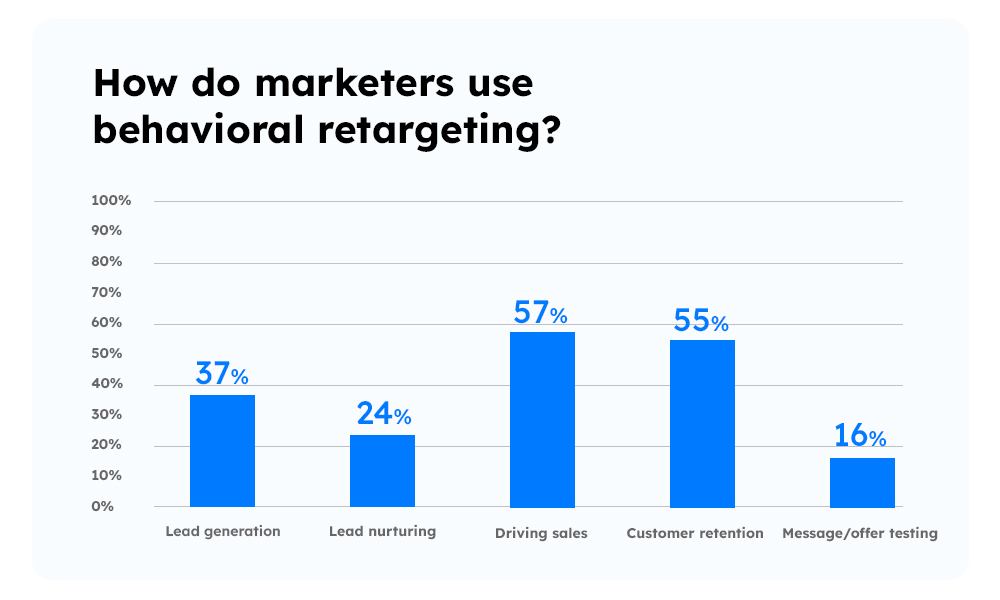
But what makes this strategy better than traditional advertising? How can you use it to target customers and sell successfully? Let’s explore.
What is Behavioral Targeting?
Behavioral targeting, also known as behavioral remarketing, is taking cues from people’s online activities to determine relevance and show advertisements accordingly. It uses behavioral data like users’ activities on your app, website, ad, or social media to trigger ads.
People often use the terms like targeted marketing, contextual advertising, and behavioral targeting interchangeably.
However, there’s a fine line between them.
Think of targeted marketing as a broad term, where you target customers based on certain attributes based on their customer profile. Contextual advertising is serving ads based on the website or page content. Behavioral targeting is showing ads based on what the user searched online, irrespective of the website or page content.
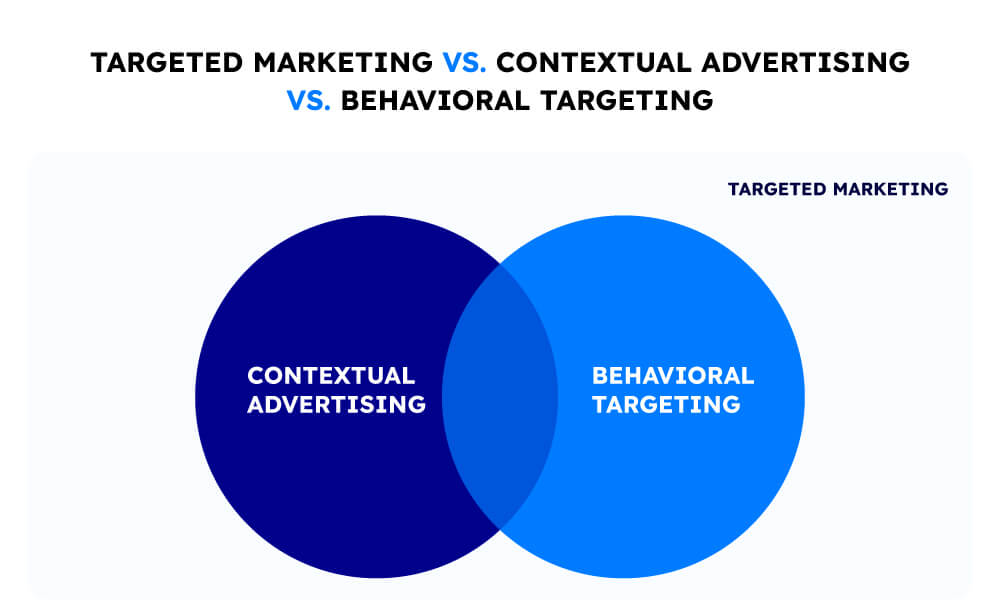
Let’s look at the difference between the two in more detail.
Behavioral targeting vs. contextual advertising
| Behavioral targeting | Contextual advertising | |
| Definition | It is the act of displaying relevant ads based on the visitor’s online activities and personal information. | It is the act of displaying relevant ads based on a website’s content rather than using the visitor data. |
| Example | An apparel ad shown on multiple websites after visiting the brand page or searching for similar products online. | A pet food ad shown on a dog grooming YouTube video. |
| Time and relevance | Very relevant and timely | Relevant, but not necessarily timely. |
| Types of consumer behavior tracked | Frequently visited pages, time spent on a page/ad, link clicks, web searches, interaction with webpage elements, transactions and purchase history | This method doesn’t use information about consumers. It relies on the context of the ad.However, if the user clicks on the ad, their information is captured for ad campaign insights. |
| How do advertisers determine which ads to show? | Based on consumers’ website activities and demographic information. | Based on keywords and topic sections. |
| Cost | In general, behavioral targeting costs 1.94 times contextual advertising. | Depends on the publisher (their pricing model) or ad publishing platform (Google Adsense) |
| CTR | 0.7% (retargeted ads) | 0.07% (regular display ads) |
| Blockers | Privacy issues and GDPR compliance | Publisher policies |
We’ve all experienced some form of behavioral targeting.
For example, Netflix. It uses behavioral targeting in their CineMatch algorithm.
They use behaviour targeting to analyze and understand your preferences. It includes genres you like, what you commonly watch and avoid. They examine these factors to match you with more relevant content to keep you on the app.
Along with great content, recommending movies by reading an individual’s mind is the reason behind Netflix’s 74 million subscribers in the US and Canada alone.
But that doesn’t mean behavioral targeting doesn’t come with its fair share of challenges.
3 Behavioral targeting challenges
Behavioral targeting sounds simple at first, but it does face some criticism.
In fact, 76% of companies fail to apply behavioral targeting in their campaigns.
It may seem puzzling because there are clear reasons to use behavioral targeting tools. But these concerns stem from valid reasons, and they are:
1. Privacy and security concerns
81% of Americans feel they have little control over the data collected about them. Invasion of privacy is another reason why people don’t want companies to track their website activities.
While companies may say we can trust them with their data, some tech giants have given us reasons not to trust them. For instance, Facebook has faced slack for its advertising and data collection. There were consequential laws and discussions about customer privacy set forth by Senators.
However, these concerns arise if and when companies fail to protect their customer’s data. So, when you use behavioral targeting, it’s your job to handle your customer data with care.
2. Incomplete information
If the consumer deletes or disables browser/app cookies, you lose track of their activities.
A classic example of this situation is when you continue to see ads even after you’ve purchased the product from some other website.
3. The problem of plenty
74% of users believe there are way too many advertisements. For adults aged 35 and up, the percentage rises to 78. And 63% of users state that they tend to see the same ads multiple times.
Strange, but true. In an attention economy, every website we visit either has ads or is an ad. If not executed well, advertorial content might just serve as an information overload and cause more harm than good.
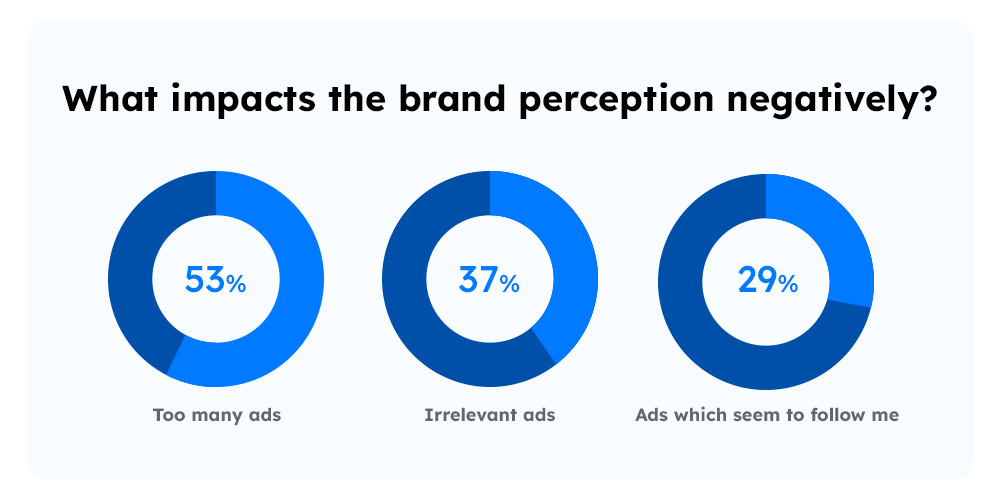
We’ve all experienced our fair share of annoying ads that only keep us away from the product. When we add behavioral targeting into the mix, the ads may end up coming across creepy more than cool.
So, target customers sparingly and specifically. Use your ad campaigns in a way that excites rather than enrages your consumers.
These are some of the challenges we face when using behavioral targeting. They may seem overwhelming, but the benefits outweigh the challenges. If you are wondering what these are, let’s find out in the next section!
The benefits of Behavioral targeting
Behavioral targeting offers multiple benefits that can boost your business’s growth. In a world full of personalized offers, you won’t be able to compete without it.
I’ve divided the benefits into three main categories. They are:
1. Increased Relevance
Behavioral targeting is the perfect method to add relevance at scale.
For example, imagine you’re someone who loves coffee and drinks it twice or thrice a day. So, you explore brewing methods or new varieties of coffee online.
Behavioral targeting uses this activity information to show you coffee houses near you, exciting offers on brands, and so on.
The best thing is it lets you target individual customers. That is, if your friend, who shares the same demographics, loves tea, they won’t see ads related to coffee.
2. Increased Engagement
Behavioral targeting helps increase engagement in two ways – re-engaging customers and long-term engagement.
Re-engaging customers
Companies map the user’s previous on-site interactions and re-establish any lost connection by retargeting that customer.
For example, a buyer visited your pricing page but took no action. You can use remarketing campaigns to reach out to them even after weeks or months.
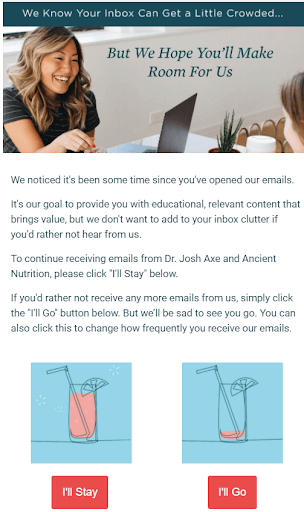
Long-term engagement
If a consumer is interested in your content, you can keep sending them relevant information or show them relevant ads over a longer period.
For example, you can give an option to subscribe to your newsletter on your website. If they do, you send them a weekly or monthly newsletter that contains links to some other relevant content.
This strategy opens long-term communication options with customers. It also ensures that your customers are in control of the ads they receive from your company. This manner of targeting reduces everyone’s anxiety about privacy and security.
3. Improved ROI
Let’s be frank:
Spending a budget on ads without a target audience in mind is a waste of money.
Behavioral targeting encourages you to segment customers (more on that later) and shows ads based on some triggers. For example, when they revisit your website or search for similar products online.
Research shows that there is a 70% greater chance of converting re-targeted users.
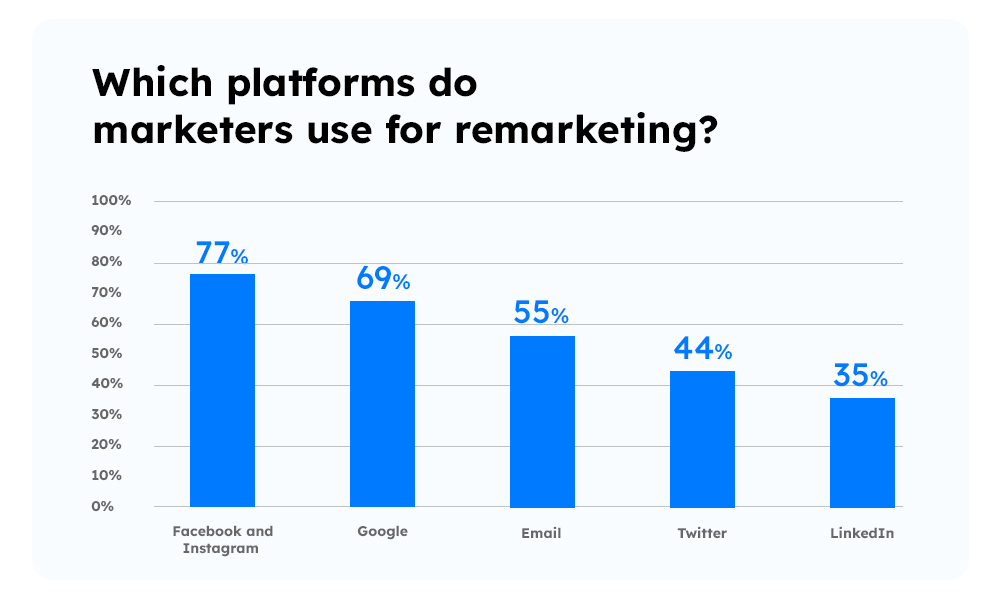
The idea is simple. For some reason, the buyer may have lost interest in the product some time ago. But now they are again in the market looking for the same product/service. And hence, you have a chance to sell.
So far, we discussed the challenges and benefits of behavioral targeting. Now let’s see how to make it work for you.
How to use behavioral targeting in your next campaign
Ready to use behavioral targeting in your next ad campaign?
Great! To make it easy to understand, we have divided it into 3 phases.
Phase 1: Data collection and analysis
In this phase, collect data from a variety of sources. Mostly, businesses use embedded tracking pixels to track online user behavior.
When a buyer comes across your website or an ad, you ask them to accept cookies. Cookies are files with small pieces of customer data. They enable websites to retrieve this info when the user revisits them. It helps the advertiser recall the user’s preferences and tailor content accordingly.
Apart from this, marketers also use personal or professional information like job title, department, organization, etc. They usually get this information from the users directly (through landing pages) or by using data enrichment tools like Clearbit or Zoominfo.
The next step in the data collection phase is organizing and managing data.
To make your marketing more effective, you’ll need to compile different types of customer data to get a 360-degree view of the customer.
A CRM software like LeadSquared is helpful. It helps you organize, analyze, and easily access customer and campaign data from a single platform.
Phase 2: Audience segmentation
What if a person from Chicago sees your ad and wants to buy your product while you only ship within Ohio.
That’s why segmenting your target audience is essential to make your behavioral targeting strategy work.
Most advertising tools offer segmentation based on:
- Geography
- Age
- Gender
- Education
- Other attributes like company, work experience, interests, and traits
However, sometimes you may not have sufficient historical data to segment your target audience. For instance, you may include CXOs, but exclude people in the age group less than 30 years.
To avoid such instances, you must do thorough market research. Or you can use tools like SparkToro, Alida, or Signal for customer insights.
Phase 3: Execution
So, now you know when and to whom to show your ads.
For example, when a buyer living in Ohio searches for coffee houses near them, you have found your buyer, and therefore, you can show your ads.
But what’s the best way to go about it?
If your target market size is in the millions, how can you customize your content for every individual?
The answer is marketing automation.
From capturing intent to spotting signals, visualizing journeys, and triggering engagement and re-engagement across a number of platforms, marketing automation ensures that you send only the relevant and personalized content to your audience.
It lets you create and store different content and A/B-test your campaigns for a different set of audiences. This way, you know what converts, how and why it converts.
Nearly 75% of marketers around the globe use at least one marketing automation tool.
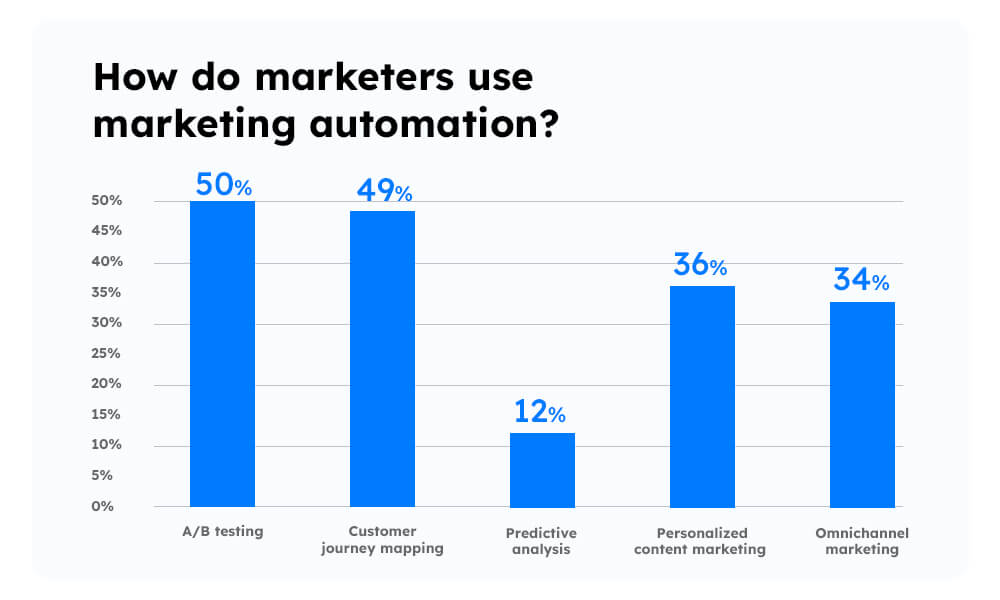
Note that showing behaviorally targeted ads is just one piece of the puzzle.
To draw a complete picture and use the customer’s information further (for remarketing, cross-selling, and upselling), you need a system to capture all interactions.
But how do you do that?
Well, CRM software again.
CRM software like LeadSquared lets you map the customer journey from lead to conversion and beyond. It is a unique sales execution and marketing automation combo that both your sales and marketing teams could use. Instead of passing leads, transferring data from one system to another, it helps you build a 360-degree view of the customer for all the stakeholders.
CRM software allows you to truly understand your customer and how they behave.
Here’s a story I’d like to share.
How IMT-CDL increases its enrollment rates with LeadSquared
Institute of Management Technology, Centre for Distance Learning, Ghaziabad is part of the prestigious IMT group, one of the oldest and most reputed institutions in management space through open and distance learning.
The institution was having a hard time sending relevant content/communication to the huge number of inquiries they get for admissions. As a result, they were missing their enrollment targets.
When they started using LeadSquared sales execution and marketing automation suite, they were able to capture leads from several ad channels, track student intent, utilize templates and send personalized communication to every individual, and track the entire journey from inquiry to enrollment.
Read the complete case study here.
In conclusion
Data collection and usage concerns aside, the trend of behavioral targeting is here to stay.
Because nothing is more annoying than an irrelevant ad.
Behavioral targeting removes the guesswork from the advertiser’s plan and brings in better conversion rates. But, displaying targeted ads is one thing; being able to acquire consumers through the right messaging based on their data, that’s how you make them effective.
So, while creating your advertisement plan, devise a nurturing and retention plan to make the most of your behavioral targeting efforts.
If you’re looking for software to streamline marketing and sales, check out LeadSquared. It has helped organizations like BYJU’S, AllState, Amazon, and many more with specific use cases.





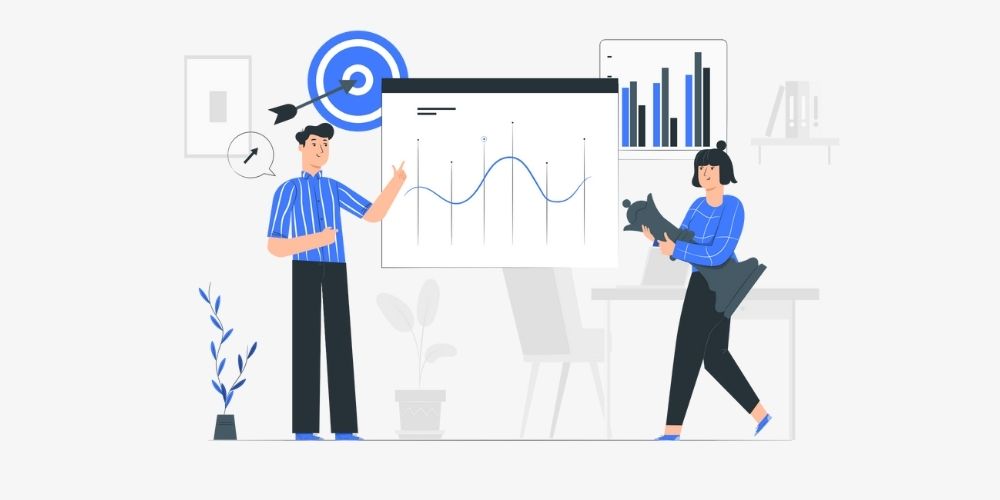



![[Webinar] Expert Session on Enrollment Growth 8 Expert Session on Enrollment Growth](https://www.leadsquared.com/wp-content/uploads/2021/12/500-80x80.png)